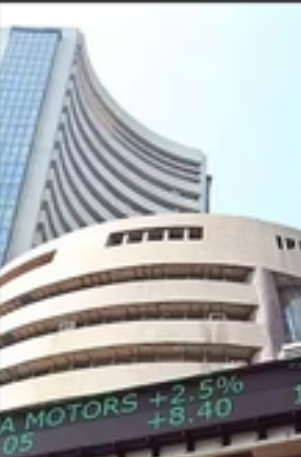
Sensex
- Indian equity market hit a record high on August 30, 2024, with Sensex and Nifty closing at 82,365 and 25,235 respectively.
- Auto, IT, PSU Bank, Financial Service, Pharma, Realty, and Metal sectors were the major gainers, while FMCG and Media sectors lagged.
- Market performance was attributed to global factors, particularly the US Federal Reserve's pledge of a rate cut in September.
- Despite the market's high, experts expect moderate Indian Q1 GDP growth and warn of a potential correction if Nifty drops below 25,000.
The Indian equity market made a significant stride on August 30, 2024, closing at an all-time high just before the release of the GDP numbers. The Sensex, the benchmark index of the Bombay Stock Exchange (BSE), ended the day at 82,365, marking an increase of 231 points or 0.28%. Similarly, the Nifty, the key index of the National Stock Exchange (NSE), closed at 25,235, up by 83 points or 0.33%. During the trading session, both the Sensex and Nifty touched new all-time highs of 82,637 and 25,268 points respectively.
Sectoral Performance and Top Gainers
The performance of the market was reflected in the individual stocks on the BSE. Out of the total shares traded, 2,239 were in the green, indicating a positive trend, while 1,687 shares were in the red, and 119 shares closed without any change. The market's performance was not uniform across all sectors. The Auto, IT, PSU Bank, Financial Service, Pharma, Realty, and Metal sectors emerged as the major gainers of the day. However, the FMCG and Media sectors lagged behind, indicating a mixed trend in the market.
In the Sensex pack, companies like Bajaj Finance, Mahindra & Mahindra, NTPC, Bajaj Finserv, Bharti Airtel, Power Grid, Sun Pharma, and TCS were the top gainers. On the other hand, Tata Motors, Reliance, ITC, Tech Mahindra, HDFC Bank, Nestle, and Maruti Suzuki were the top losers.
Market Influences and Expert Opinions
Market experts attributed the market's performance to global factors, particularly the US Federal Reserve's pledge of a rate cut in September. The US and Indian markets have regained recent highs, reflecting the continuation of this optimism. However, the strengthening of the dollar, given the healthy US GDP growth, strong retail sales, and the expectation that the upcoming US job claims will be steady, could lead to shallow rate cuts in the future.
Despite the positive bias in the domestic market, experts expect the Indian Q1 GDP growth to be moderate. The premium valuation and a lack of fresh triggers could see further momentum buildup in value stocks. The Foreign Institutional Investors (FIIs) bought equities worth Rs 3,259 crore on August 29, while domestic institutional investors extended their buying as they bought equities worth Rs 2,690 crore on the same day.
Rupak De, Senior Technical Analyst of LKP Securities, opined that the market strength is likely to persist as long as the Nifty index stays above 25,000. A drop below this level could trigger a significant correction. On the upside, the current optimism could drive the index towards 25,500 in the near term.
The anticipation of the GDP numbers, coupled with global factors, drove the market to an all-time high. However, the market's future trajectory will depend on a range of factors, including domestic economic performance, global economic trends, and policy decisions. This event serves as a reflection of the market's sensitivity to economic indicators and the need for investors to stay informed and vigilant.









